The Public Lab Blog
stories from the Public Lab community
About the blog | Research | Methods
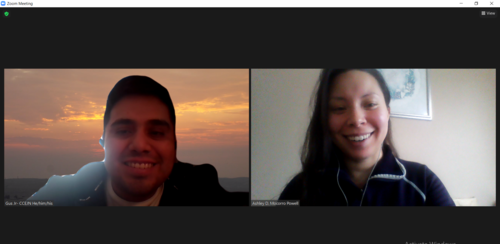
Community Science and Monitoring Networks in Central California
In an interview on January 26, 2021 for Public Lab, Gustavo Aguirre Jr. shared his experience taking action against the major industries situated within California’s Kern, Tulare, and Kings Counties. Gustavo is the Kern County Director of Central California Environmental Justice Network (CCEJN). In 2001, CCEJN founders recognized that their target communities were located throughout the San Joaquin Valley, and so the network expanded to work in partnership with groups from across the region. CCEJN was established in 1999 and is an environmental justice non-profit organization whose “mission is to empower our communities and secure our children’s future by eliminating negative environmental impacts in low income and communities of color in the Central Valley.” Since their beginning, CCEJN has fostered strong working relationships with grassroots groups, regulatory agencies, and academic institutions.
Growing up Gustavo shared he was surrounded by his parents and their friends who were United Farm Workers (UFW) labor organizers going back to the 1970s. This community environment exposed him to political advocacy early in his youth and deeply instilled his commitment to community health. In his interview, Gustavo described, “My father worked for UFW...he had an organizing lifestyle: picket lining, workshops with other advocates, backyard barbeques.” Naturally, Gustavo learned that building healthy communities requires frequent communication, collaborative dialogues, and efforts that are intentionally intergenerational.
Over the years, Gustavo and his CCEJN colleagues have developed effective community-centered programs, and he admitted that while reaching residents can be tough especially during COVID-19, in a typical year they are able to get people to keep coming back to their workshops. He described the effectiveness of framing any given environmental health issue around the family, and building opportunities for local youth to not only learn but apply their knowledge through hands-on activities and local advocacy channels. Gustavo has been integral to the development of CCEJN’s environmental reporting and environmental monitoring efforts.
When I asked him to reflect on his own pathway into community science, Gustavo described his earlier years learning alongside Jessica Hendricks and Denny Larson of Global Community Monitor (GCM) in 2014. Gustavo’s time with CGM allowed him to learn how to use the Bucket air monitoring tool, receive direct mentorship, and support collaborative air quality monitoring efforts. “We put together a document on QAQC [quality assurance and quality control] protocols, compared varying methodologies around community air sampling…” and “...there’s a need for these [community air sampling] methods to be respected.” In his year with GCM he learned how do-it-yourself monitoring tools, mostly meant to capture data about place and local informational events, had the potential to create bigger projects -- and bring accountability to regulatory agencies. Once at CCEJN, where Gustavo has proudly been for 7 years, he was encouraged to carry on his community science and organizing work. “The Bucket has served to capture the narratives of the [San Joaquin Valley] communities and support the residents here to see and question what’s going on around them.” He continues to introduce local youth to the power and tools of community-led science and inquiry.
When I asked Gustavo about the key elements of CCEJN’s programming, he emphasized that they spend significant time organizing communities and neighbors by facilitating culturally-grounded education workshops and offering environmental justice literacy curriculum. These workshops help explain environmental science and policy jargon, offer translation, and break down what regulatory agencies are. Gustavo emphasized that their work is to enable residents to see the entire web of contact among regulators and communities, and encourage them to use their community-based reporting platform. This reporting platform is based at CCEJN with emphasis on reporting environmental concerns and observations. “We give them a green card with the phone number and share how to use the website.”
In CCEJN’s earlier years, the community was quick to start bringing their concerns. They reported the local oil rig/tanks in their neighborhoods, and CCEJN asked them, “What can you tell us about this?” This initially got them interested in noticing odor, smog, and when the oil rigs were moving. As more visual scenes were reported, nothing would happen. “Then we’d go out and collect Bucket samples.” With these community air quality samples, CCEJN would identify an academic institution and research team in their partnership network to lend support. “With the samples in a University of Washington report, all of it together, gave our efforts a whole different level of energy.” Through their programs, CCEJN supports community members to see how they can use data: understanding how and what data is, who controls it, and how they can create their own with accessible instruments and tools – then create their own narratives with it.
Gustavo mentions that one of CCEJN’s successes is, “We meet the community members and leaders that really have that spark. Have them keep coming back. We build those relationships. It’s all long term. We can take it to the next level, we just have to keep at it. You may not get to see the benefits right upfront, though after some time the trends do appear.” To learn more about CCEJN’s programs, visit https://ccejn.org/category/projects/.
This interview is part of Public Lab’s efforts to update information about the Bucket air monitoring tool and share stories from community groups currently using it all over the world. To subscribe to updates, visit: https://publiclab.org/notes/Shannon/05-14-2020/the-bucket-updating-and-open-sourcing-a-community-air-monitoring-tool
Interested in starting your own Bucket Bridgade? Learn more here: https://publiclab.org/notes/kgradow1/06-09-2020/how-to-set-up-a-bucket-brigade
Build your own Bucket monitoring tool, we have the parts available in our store through the Public Lab Kits Initiative: https://store.publiclab.org/
Follow related tags:
california interview reporting air-quality

Soil Testing and ATSDR in Pascagoula, MS
Some background:
Cherokee Concerned Citizens has been an active community group fighting the ongoing industrial pollution that affects their community since 2014 (read an earlier post on our community here). The neighborhood in Pascagoula Mississippi is surrounded by several facilities (the Bayou Casotte Industrial Park), including Chevron which has been active for over 50 years, VT Halter Marine, LNG, BP Enterprise Gas Processing, and First Chemical. After years of individual complaints to the Mississippi Department of Environmental Quality, residents came together in 2013 to address their common issues relating to the sickening industrial odors and toxic particulate matter that they believed explained their health issues, including rashes, respiratory issues, asthma, chronic colds and sinus problems, burning eyes, nose, and throats, tingling and numbness, sleep disorders, memory problems, digestive issues, cancers, and more.
Over the years, the group has been documenting pollutants such as benzene, sulfuric acid, sulfur, particulate matter, manganese, and particulate matter. They have documented sandblasting overspray, industrial noise pollution, managed their own odor logs, and conducted health surveys. For years they’ve monitored, reported, and documented, to no avail. They’ve been kept out of federal processes for contributing through an EPA Community Advisory Committee, had their data ignored by their state Department of Environmental Quality, and waited 6 years for expired permits to come up for renewal so they can register comments on them, but none, save one, have. In fact, one company, Mississippi Phosphates, responsible for creating a superfund site, operated under and expired permit for 10 years before they went bankrupt, burdening the community with “700 million gallons of acidic, nutrient-rich wastewater” costing the federal government more than $34 million dollars as of 2019.
An Update:
After being ignored for years by EPA and MDEQ, Cherokee Concerned Citizens (CCC) got in touch with the Agency for Toxics Substances and Disease Registry (ATSDR) who agreed to do an investigation into the existing data. However, ATSDR won’t do any testing themselves so CCC has been gathering some more data to share. In Spring 2020, CCC reached out to Public Lab to borrow a Hanby soil testing kit, and started testing. They took photos and tests, and working with a lab in Houston, were able to get some analysis and results. Of the tests conducted, Hanby said there’s a higher level of petroleum pollution in the samples than what you would want in a residential area, 5x the level of "healthy" soils for oil and gas related contamination. They said it’s concerning and CCC should get it tested with the EPA. ATSDR is going to take this data, along with all the other data and submit a report to the EPA with recommendations to the EPA on how they should handle the contamination.
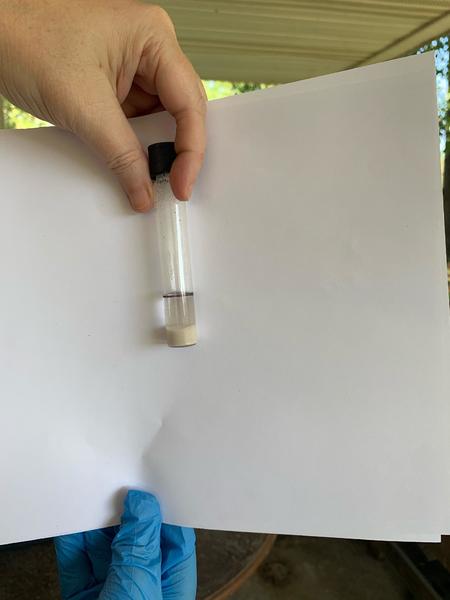 The photo is from soil testing in a neighborhood in Pascagoula, Mississippi. It shows 500ppm of oil related contamination.
The photo is from soil testing in a neighborhood in Pascagoula, Mississippi. It shows 500ppm of oil related contamination.
How you can help us
Here are several questions we’re looking for insight on. Please click the links to help answer or pass along more information! Or comment on this post. Thanks so much!
- Chevron is up for a permit renewal again (under title 5 of the Clean Air Act), we have a 4800 page report on the company, how can we get through it and pull out the valuable info?
- What would be the petition process to the EPA? And what are the criteria for a strong petition?
- Is it illegal for the US EPA to deny the Community Advisory Group process because of a random, unnamed reporter claiming that the communities in the vicinity of the Superfund site are already engaged?
- For US Environmental Protection Agency Community Advisory Groups (CAGs): Does the EPA have to engage the local communities in the Superfund vicinity? And if so, what does that process need to look like?
- In terms of community science, MDEQ already discredited community based science, what might add legitimacy to our data?
Follow related tags:
mississippi epa blog legal
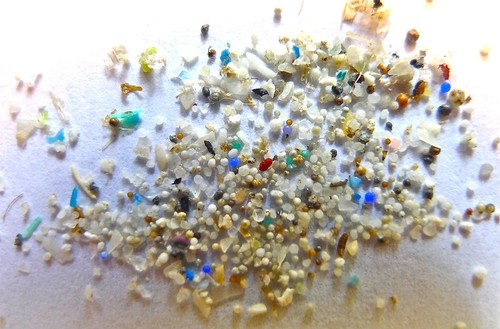
Summary: Public Lab’s microplastics research area review
Image: Microplastics, by 5Gyres, courtesy of Oregon State University. CC BY SA.
The research area review we began last month on microplastics is wrapping up!
- Community stories
- Resources on ways to research microplastics pollution, for a variety of watery environments and investments in cost and time
- Information on relevant regulations and policies
- Some thoughts on next step challenges
With the review, we aimed to refresh Public Lab content with resources that would help anyone find ways to monitor microplastics pollution in their community. We already had several existing comprehensive posts on tools and methods to research microplastics (many authored by @maxliboiron), so we mainly turned to sources beyond Public Lab to see what other materials might help our community.
By far, the most fruitful parts of the review process were the conversations. An international crew of people shared their time, perspectives, and knowledge of microplastics research with us, and they deserve a hearty thank you for their contributions:
- Jace Tunnell, leader of Nurdle Patrol and Director of the Mission-Aransas National Estuarine Research Reserve, University of Texas Marine Science Institute.
- Dr. Winnie Courtene-Jones, Lead Scientist for the Round the World research missions at eXXpedition and Research Fellow at the University of Plymouth, UK.
- David Boudinot and Daniel Brendle-Moczuk of the University of Victoria and Surfrider Foundation of Vancouver Island.
- Win Cowger, PhD student researching plastic pollution at the University of California Riverside
- Lucas Harris, formerly of CLEAR and the Surfrider Foundation, and now Senior Policy Analyst with the British Columbia Ministry of Environment and Climate Change Strategy.
- Eleanor Hines, Lead Scientist and North Sound Baykeeper with RE Sources for Sustainable Communities in Bellingham, WA.
- Scott Eustis and other members of Healthy Gulf, who authored several Public Lab posts about a recent plastic pellet spill in New Orleans. See their posts here: https://publiclab.org/n/24462; https://publiclab.org/n/24528; https://publiclab.org/n/24634
- Barent Roth of the community science project Testing Our Waters.
In these conversations, people shared their tips, tools, and resources for community scientists interested in microplastics, related stories and experiences, gave insight into what's currently developing in microplastics research and policy, and unearthed questions that might direct where we can go next on this topic.
We also had an event! We wrapped up the research area review with a virtual, open call where we connected with each other to tell stories, uncover more questions, and give highlights of the review. Check out the summary notes here and a recording of the event here.
Stay tuned for information about our next research area review and how to get involved! We'll be looking for input on what topics to review next soon. And please comment below if you have any ideas, questions, or feedback!
Follow related tags:
research blog reviews micro-plastics

Congratulations to our Outreachy and GSoC 2020 fellows 👏👏👏
Last week, we wrapped up our 2020 Outreachy and Google Summer of Code programs, involving a team of super cool fellows -- 7, with 3 joining via #Outreachy and 4 via #GSoC.
(see the above visualization of `plots2` work at http://ghv.artzub.com/#repo=plots2&climit=300&user=publiclab !)
We were grateful to have these interns working on some challenging problems which have had a huge impact on our web projects here at Public Lab. We are also super happy to have worked as a big "family" in these hard times. The fellows have now wrapped up their work, tested their code, pushed code to production and have written brilliant documentation so that new contributors can easily understand and continue their legacy. 🎈

We had a very successful summer, with a huge number of critical features being introduced in existing projects and some incredible collaborations. 👏👏👏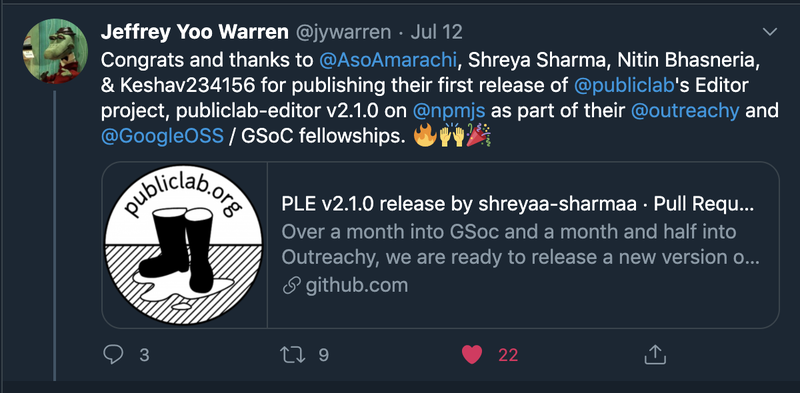
All the fellows opened so many first-timer-only issues (Replacing .length and .count with .size issues really made an impact with ~20 new contributors solving them!!!). There was awesome collaboration especially with PublicLab.Editor team, which shows how we have grown and developed cooperative practices. All the fellows showed great leadership and guided their co-fellows as well as first-timers in the right direction whenever needed, which was crucial to the SUCCESS of the summer project 😁
Overall, we are super pleased, and wanted to offer a big CONGRATULATIONS to everyone who participated: students/interns/fellows, mentors, and also all the newcomers who came and joined in on these projects. 🚀🚀🚀
We would love to have you all connected with us even after this summer, and wish all the best for your future endeavors. Here are everyone's final reports. And again, GREAT WORK!!! 🎉 🎉 🎉 🎉
(if yours does't appear, please add the soc-2020-final tag, or add a link in the comments, thanks!)
| Title | Author | Updated | Likes | Comments |
|---|---|---|---|---|
| Congratulations to our Outreachy and GSoC 2020 fellows 👏👏👏 | @warren | almost 4 years ago | 7 | 3 |
| GSoC 2020 Report: Spam Management Dashboard | @keshav_sethi0004 | almost 4 years ago | 4 | 4 |
| GSoC 2020: Mapknitter Export Module and Spectral Workbench upgrades | @alaxallves | almost 4 years ago | 5 | 4 |
| Spam Management Dashboard (Documentation) | @keshav_sethi0004 | almost 4 years ago | 4 | 6 |
Follow related tags:
gsoc blog code soc

Tips for environmental storytelling
I started working in communications over a decade ago because I love helping people tell their stories. For me, there's nothing more exciting than helping people to get to the core of an issue to communicate a story in a way that will reach people and have an impact. When we're overwhelmed with trying to figure out what's happening in our communities and what we can do about it, it's easy to forget about the importance of sharing the human impact when sharing our stories or asking for help. Here are some tips that can help when you're talking about environmental impacts. [Disclaimer: these tips tend to be more applicable to U.S. audiences]
Make it personal
In interviewing people on numerous topics over the years, whether it be about human rights work, LGBTQ experiences, or environmental concerns, one of the most useful questions I've found is "Why is this issue important to you?" While bias and political divisions may turn people off to terms like "climate change" and "environmental justice," many people can relate to "I'm worried about my health and the health of my family."
When you're telling your story, make it personal. Explain what you've experienced or what others in your family or community have experienced. Why does it concern you? Who is being impacted? How have their lives changed?
Consider your platform
When posting to social media, recognize that each platform is unique. Twitter is great for links and short messages, Instagram works well for photos and short videos (or longer videos through IGTV), and Facebook is especially useful for sharing links, event pages, and video. Try to avoid creating a flyer or message and copy-and-pasting on all three platforms. Instead, tailor each message to each platform.
Things to think about: Is your event something you can stream on Facebook Live? Is there a trending hashtag on Twitter related to your topic? Do you have some great photos to share for #TBT (Throwback Thursday) on Instagram? Generate content on a regular basis and figure out what posting frequency people respond to.
When trying to get a story picked up by a newspaper, magazine, or online news outlet, sending a press release is less effective than it once was. While it may be difficult to get your story picked up by a newspaper or national press outlet, letters to the editor are often useful. Newspapers, especially local papers, often share opinions and feedback from community members.
Also, figure out who the local beat reporters are. Are there certain reporters who often write about science, the environment, or legislation? Contact them directly. Follow them on Twitter. They may not respond, but it's worth asking if they know about a story or if there's a reporter who usually handles similar topics.
Work together
Starting a movement from scratch is a daunting task, and it's easy to feel alone. Chances are, though, that there are others who are already doing similar or related work. Sharing your story with them gives you the chance to join an established community with existing structures, networks, knowledge, and support.
If you're not finding others in your community who are exploring a specific topic of environmental concern, think about intersectionality. If you're concerned about microplastics you've seen in your local river but can't find others working on microplastics, are there groups working on water quality or conservation? Are there people who monitor the oil and gas industry, or protect fisheries? If you're noticing strong sulfur smells coming from a waste site, are there air quality groups that deal with similar issues? From there, think bigger. Are there national or international organizations that work on similar concerns or something that might fall under their umbrella?
Also, think about where people gather locally. If you're trying to get people to sign a petition or discuss a topic, where do gatherings already exist? Consider city council meetings, faith communities, neighborhood groups (including the NextDoor app and Facebook groups), parks, grocery stores, and coffee shops. Are there bulletin boards where you can post a flyer? Can you schedule time to present your ideas?
Public Lab is a great resource for connecting with people worldwide who might be dealing with similar issues. Have a look at topics that are relevant to you and see what others are saying about it. Subscribe to tags so you can see when people post new questions or activities about the topic. Post a question using the Question & Answer forum, or post an Issue Brief to share your story about an environmental concern and reach out to others for ideas.
Follow related tags:
blog storytelling lat:29 lon:-90

Rails Girls Kenya: Mega Workshop 2
Description
On the 7th of March 2020, which happened to be the International Women’s Day (this was intentional) Rails Girls Nairobi and Rails Girls Mombasa - which collectively forms Rails Girls Kenya - came together for a one day workshop. The main aim was to excite more ladies to join the tech community by introducing attendees to Ruby on Rails, and opening their eyes to the importance of tech communities in career development. This was done as part of our greater goal of building diversity in the Kenyan tech space, an industry that is currently male dominated. We also welcomed Gents, provided they tagged along with at least two ladies 😉
Registrations and Installations
A week before the event, we sent out setup instructions to everyone who had signed up. This was done to help as many people get ready come D-day. As expected, we had some attendees who got stuck with the setup process (mostly Windows users), but coaches helped them out as they arrived. We also had some stickers for early birds including PL's ❤️ thanks @jywarren
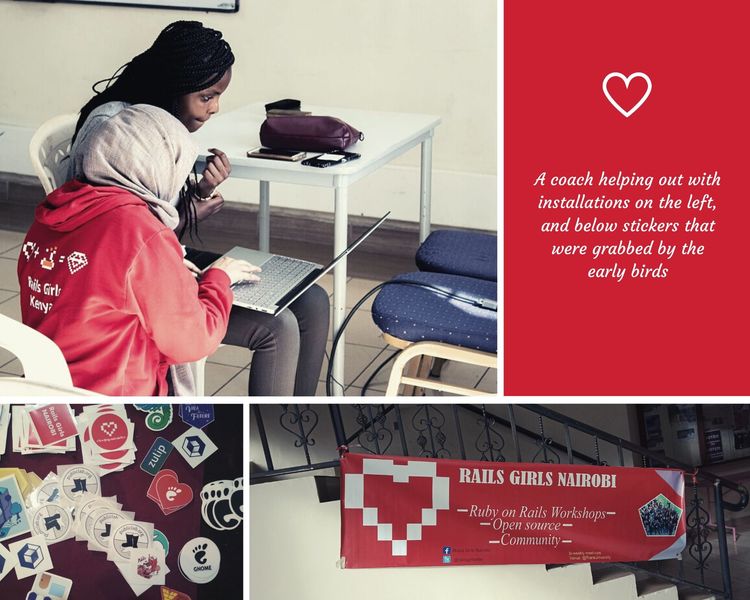
Intro
We kicked off with 5-min talks from each of our sponsors’ representatives. They told us what they do, the problems they are solving with their technologies, and their reasons for choosing to support Rails Girls Kenya. Their banners were also present at the event. We had an intro to Object Oriented Programming and Ruby and got the audience excited for the first breakout session.
Breakout Hands on Sessions
Our breakout sessions consisted of one coach and 4–5 attendees. The attendees were matched based on their level of programming experience.
The idea behind these sessions is to “show spark, personality and keep in mind the big picture. Explain, repeat and always tie what you’re telling into a larger context.” This is one of the philosophies of the breakout sessions as defined in the Rails Girls organization guidelines, which is the umbrella organization of these two chapters(RG Nairobi and RG Mombasa).
We introduced a twist to our breakout sessions this time round. Each team was required to come up with an interesting application. Teams would then present their applications, plus share what they had learnt. We had 3 coaches and 1 organizer as part of our judging panel.
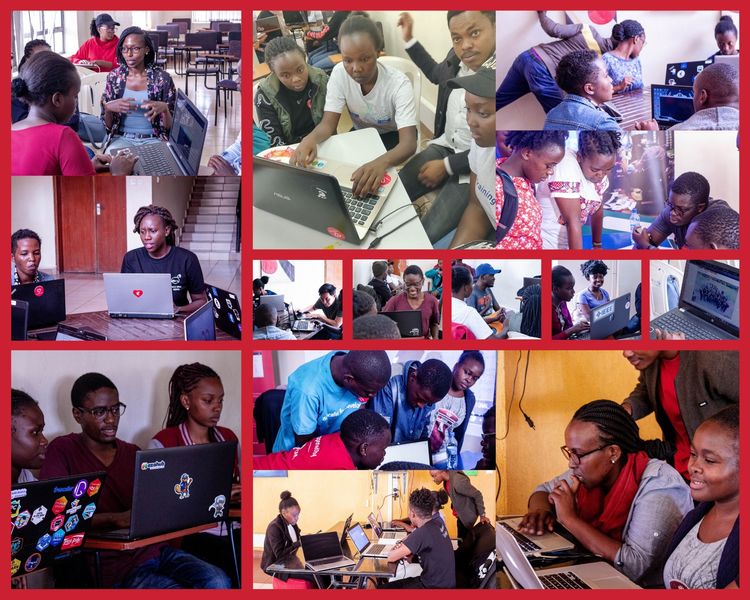
“The event was well planned and well executed. We had so much fun learning as we competed. It takes working together to learn together and I think that was the best thing about Rails Girls Kenya Megacoding event” said Dan Kat one of the attendees and a long-time member
Project Presentations and Awards
After lunch break, teams had 30 mins to finalize their applications and discuss their presentations. The teams then had 4 minutes each for the presentations. Our panel of judges asked them questions to gauge their understanding of topics tackled, and to better understand the thinking behind their apps. The judges checked on each team's understanding of how their different apps worked, the different components they had included, and their efforts to improve the default scaffold design.
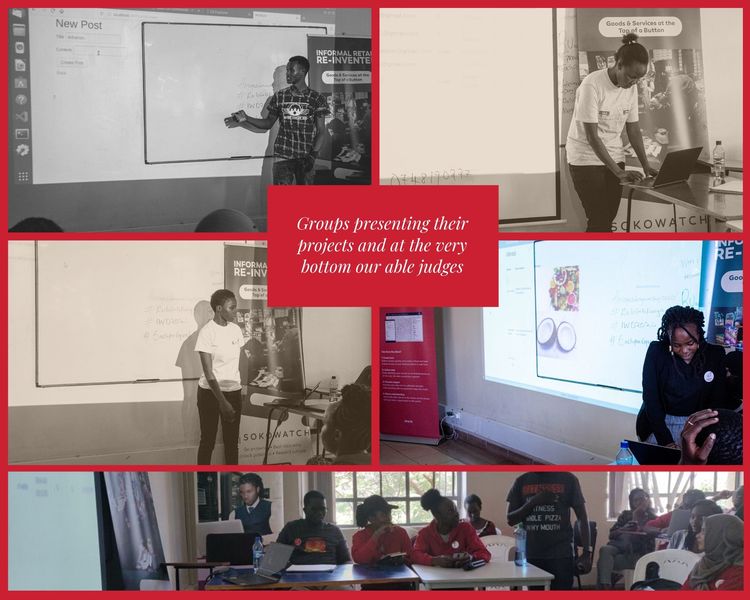 The winning teams and exceptional individuals were presented with their awards.
The winning teams and exceptional individuals were presented with their awards.
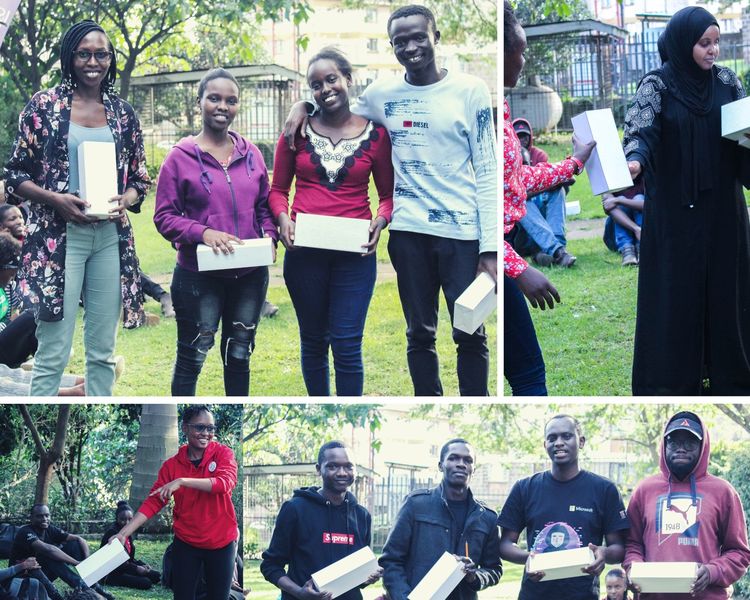
Lightning Talks
We have a rule of making lightning talks as short as possible. We find this makes the audience listen to every word, the coaches are required to make their talks as short as possible, and to go straight to the point. This time we minimized it to a maximum of 3 minutes each and they made use of every second.
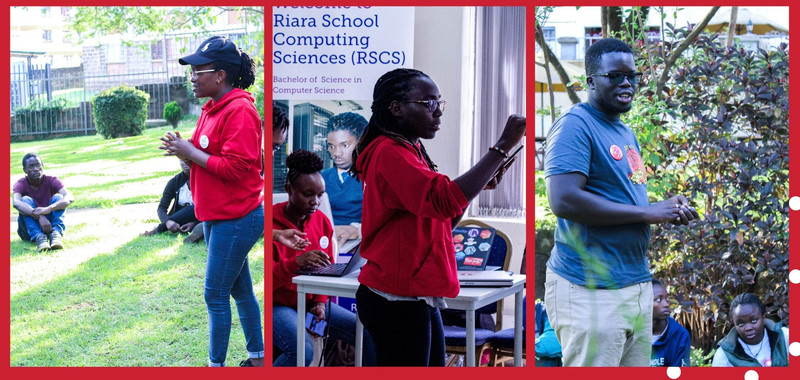 Catherine (far left) gave a talk on how to leverage opensource for experience and skills development. She also talked about open source paid opportunities like Rails Girls Summer of Code, Google Summer of code and Outreachy.
Hannah(in the middle) told us how she became interested in tech (spoiler alert it was about a boy) and how she grew in her career to be working with top clients like Github under Andela.
Paul(right) discussed “What Next”. How the attendees can make use of what they learnt, importance of tech communities in career growth and how to find help when stuck.
Catherine (far left) gave a talk on how to leverage opensource for experience and skills development. She also talked about open source paid opportunities like Rails Girls Summer of Code, Google Summer of code and Outreachy.
Hannah(in the middle) told us how she became interested in tech (spoiler alert it was about a boy) and how she grew in her career to be working with top clients like Github under Andela.
Paul(right) discussed “What Next”. How the attendees can make use of what they learnt, importance of tech communities in career growth and how to find help when stuck.
Coaches
Here is what Winnie, a first time coach, had to say about the event: “Being a first time coach for a Ruby on Rails event, I enjoyed my time and had a great experience. We were two coaches with 5 learners and that made it easier for us to break down the project to the learners. During the breakout sessions, I loved the fact that the team I was working with was diverse and had strong listening skills. After explaining to them the project at hand, they took the initiative to come up with the approach they were to use while working collaboratively on it.
image description The learners were excited to learn and it was satisfying to see them build a basic app which equipped them with foundation knowledge on Ruby on Rails. After we had completed working on the application, we shared with the team some feedback from the breakout session and shared with them more resources on Ruby on Rails.” said Winnie Rotich. She was also kind and honest enough to offer positive criticism and concerns with the other coaches that will keep in mind during our next event :) More of our coaches
Organizers
The event was an awesome collaboration these great ladies who worked tirelessly, replying to emails, brainstorming, designing the posters and booking vendors etc..I remember us being in a meeting three weeks to the event and we didn’t have any cent in our account only but the determination kept us going and they were ready to dig into our pockets to make sure the event happened.
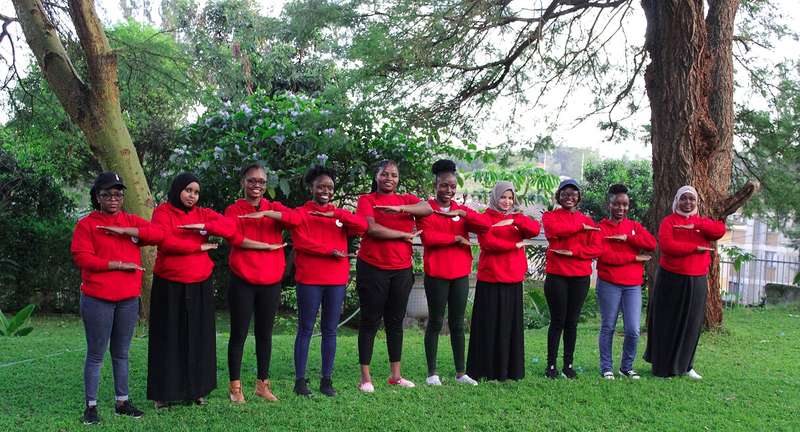
Fun times
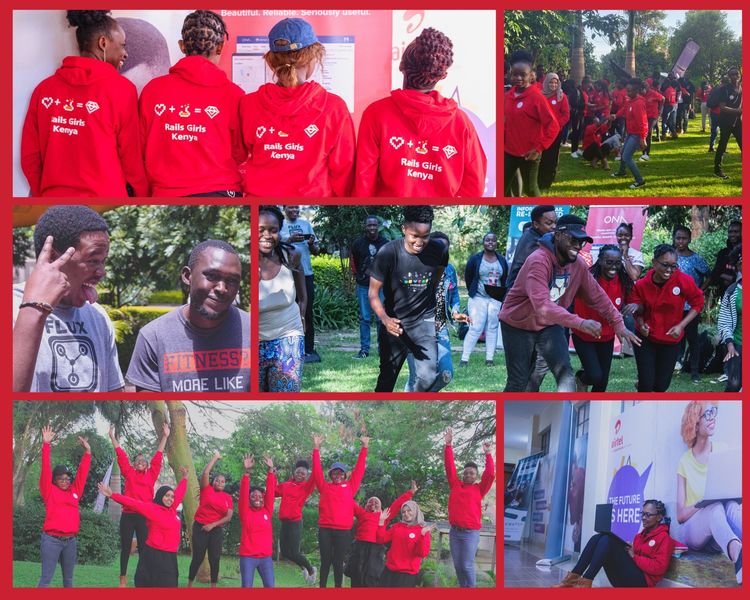
Our Sponsors
We are grateful that for the first time the event was fully sponsored by local startups and a local university.
- Ona: helps you make better informed decisions using your data
- Sokowatch enables informal retailers to order products at anytime via SMS or mobile app, and receive free same-day delivery to their store.
- Riara University provides holistic education to enable student realize their full potential and develop social and moral values which will underpin their actions through life.
- Twiga Foods links farmers and vendors to fair, trusted, modern markets. Providing a complete supply chain in Kenya for quality produce in urban areas.
Follow related tags:
event blog lat:-1 lon:36